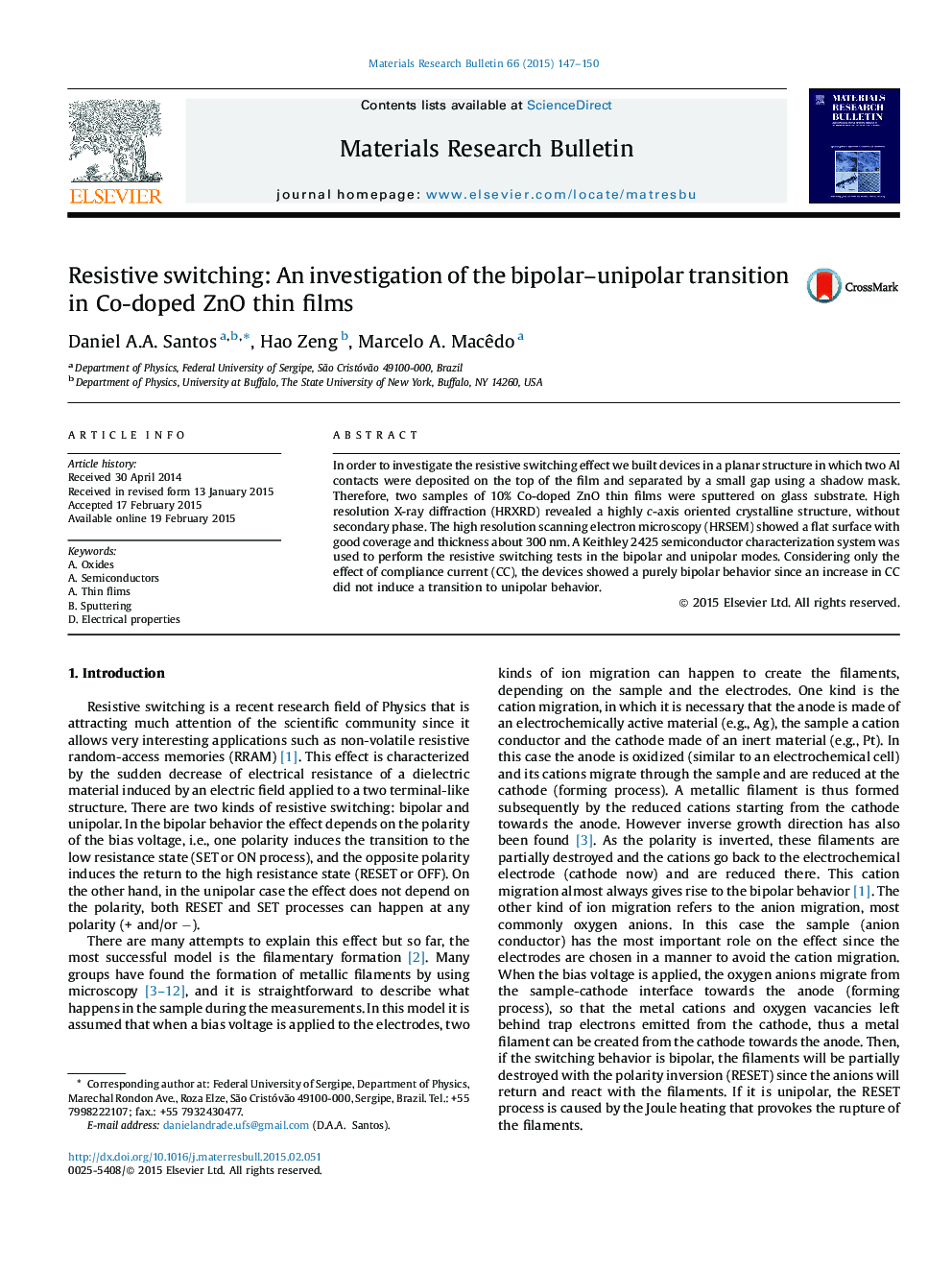| Article ID | Journal | Published Year | Pages | File Type |
|---|---|---|---|---|
| 1487926 | Materials Research Bulletin | 2015 | 4 Pages |
•A purely bipolar behavior on a Co-doped ZnO thin film has been demonstrated.•We have shown what can happen if a unipolar test is performed in a purely bipolar device.•An explanation for how a sample can show a purely bipolar switching behavior was suggested.•An important open issue about resistive switching effect was put in debate.
In order to investigate the resistive switching effect we built devices in a planar structure in which two Al contacts were deposited on the top of the film and separated by a small gap using a shadow mask. Therefore, two samples of 10% Co-doped ZnO thin films were sputtered on glass substrate. High resolution X-ray diffraction (HRXRD) revealed a highly c-axis oriented crystalline structure, without secondary phase. The high resolution scanning electron microscopy (HRSEM) showed a flat surface with good coverage and thickness about 300 nm. A Keithley 2425 semiconductor characterization system was used to perform the resistive switching tests in the bipolar and unipolar modes. Considering only the effect of compliance current (CC), the devices showed a purely bipolar behavior since an increase in CC did not induce a transition to unipolar behavior.
Graphical abstractFigure optionsDownload full-size imageDownload as PowerPoint slide
